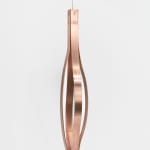Open a larger version of the following image in a popup:
 Installation view: Looking North, Yi Gallery, New York 2023
Installation view: Looking North, Yi Gallery, New York 2023
 Installation view: Looking North, Yi Gallery, New York 2023
Installation view: Looking North, Yi Gallery, New York 2023
Open a larger version of the following image in a popup:
 Installation view: Looking North, Yi Gallery, New York 2023
Installation view: Looking North, Yi Gallery, New York 2023
 Installation view: Looking North, Yi Gallery, New York 2023
Installation view: Looking North, Yi Gallery, New York 2023
Open a larger version of the following image in a popup:
 Installation view: Looking North, Yi Gallery, New York 2023
Installation view: Looking North, Yi Gallery, New York 2023
 Installation view: Looking North, Yi Gallery, New York 2023
Installation view: Looking North, Yi Gallery, New York 2023
Open a larger version of the following image in a popup:
 Installation view: Looking North, Yi Gallery, New York 2023
Installation view: Looking North, Yi Gallery, New York 2023
 Installation view: Looking North, Yi Gallery, New York 2023
Installation view: Looking North, Yi Gallery, New York 2023
Karian Amaya
Oda al Aire (Ode to air), 2023
Copper
30 x 6 x 6 in
76.2 x 15.2 x 15.2 cm
76.2 x 15.2 x 15.2 cm
KA0009
Copyright The Artist
Plus d'images
-
(View a larger image of thumbnail 1
)

-
(View a larger image of thumbnail 2
)

-
(View a larger image of thumbnail 3
)

-
(View a larger image of thumbnail 4
)

-
(View a larger image of thumbnail 5
)

-
(View a larger image of thumbnail 6
)

-
(View a larger image of thumbnail 7
)

-
(View a larger image of thumbnail 8
)

-
(View a larger image of thumbnail 9
)

In a persistent exploration of the poetic condition of matter, Karian Amaya's ‘Poetic Fields’ is a series of sculptural exercises on fragility, turning points, movement, and resistance. In this series...
In a persistent exploration of the poetic condition of matter, Karian Amaya's ‘Poetic Fields’ is a series of sculptural exercises on fragility, turning points, movement, and resistance. In this series there remains a force that sensitizes matter, which becomes forms reduced to the purest essence and without embellishments. Amaya’s work corresponds to a universe of silhouettes that are built on wind and tides, where copper exists as a metaphor for the transition of time.
Karian Amaya’s practice revolves around the notion of encounter. Through sculpture and photography, Amaya investigates and questions the dialogue and resistance originating from matter, landscape and their social and territorial contexts. Deeply influenced by Land art and postminimalist movements, her work is rooted in the formal and narrative encounter of raw, natural and industrial materials. Originally from Chihuahua, Mexico, and daughter of a mining father, Amaya’s work reveals a direct reference to the extractivism of natural materials and the fragility of the landscape affected by human activity and the passage of time. Informed by her intimate relationship with the desert landscape and materials mined in Mexico, such as copper and marble, her sculptures become an abstraction of sunset, where the materials used to be, as a contemplative homage to the organic forms, the silence and the fragility of rocks in pressure and the omnipotent landscape of the desert. Amaya’s work reflects on the deterioration of landscape as a consequence of the exploitation of natural resources and the fluency of time manifested in this process. Interested in their materiality, the poetics they contain from their formation on earth and the processes that contain transformation for industrialization, Amaya explores the circumstances surrounding materials, such as copper and marble: “I usually work with fragments that were found or rescued from their end process, because they were destined to become waste of an aggressive industrialization of the land. My intrinsic narrative allows me to develop new meanings, trying to find beauty within the imperfect, flawed or unfinished, keeping the roots of their own place.”
Karian Amaya’s practice revolves around the notion of encounter. Through sculpture and photography, Amaya investigates and questions the dialogue and resistance originating from matter, landscape and their social and territorial contexts. Deeply influenced by Land art and postminimalist movements, her work is rooted in the formal and narrative encounter of raw, natural and industrial materials. Originally from Chihuahua, Mexico, and daughter of a mining father, Amaya’s work reveals a direct reference to the extractivism of natural materials and the fragility of the landscape affected by human activity and the passage of time. Informed by her intimate relationship with the desert landscape and materials mined in Mexico, such as copper and marble, her sculptures become an abstraction of sunset, where the materials used to be, as a contemplative homage to the organic forms, the silence and the fragility of rocks in pressure and the omnipotent landscape of the desert. Amaya’s work reflects on the deterioration of landscape as a consequence of the exploitation of natural resources and the fluency of time manifested in this process. Interested in their materiality, the poetics they contain from their formation on earth and the processes that contain transformation for industrialization, Amaya explores the circumstances surrounding materials, such as copper and marble: “I usually work with fragments that were found or rescued from their end process, because they were destined to become waste of an aggressive industrialization of the land. My intrinsic narrative allows me to develop new meanings, trying to find beauty within the imperfect, flawed or unfinished, keeping the roots of their own place.”




